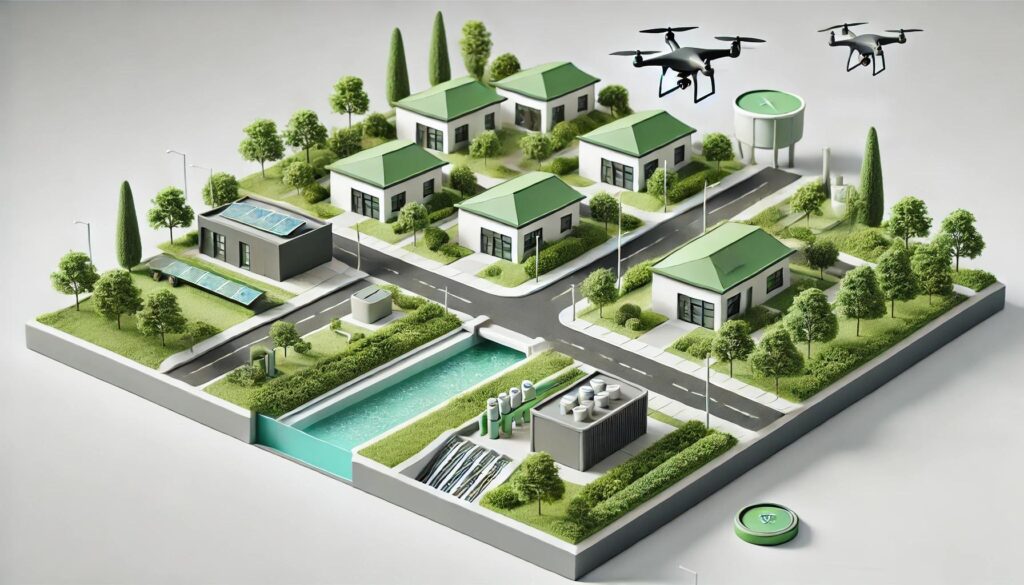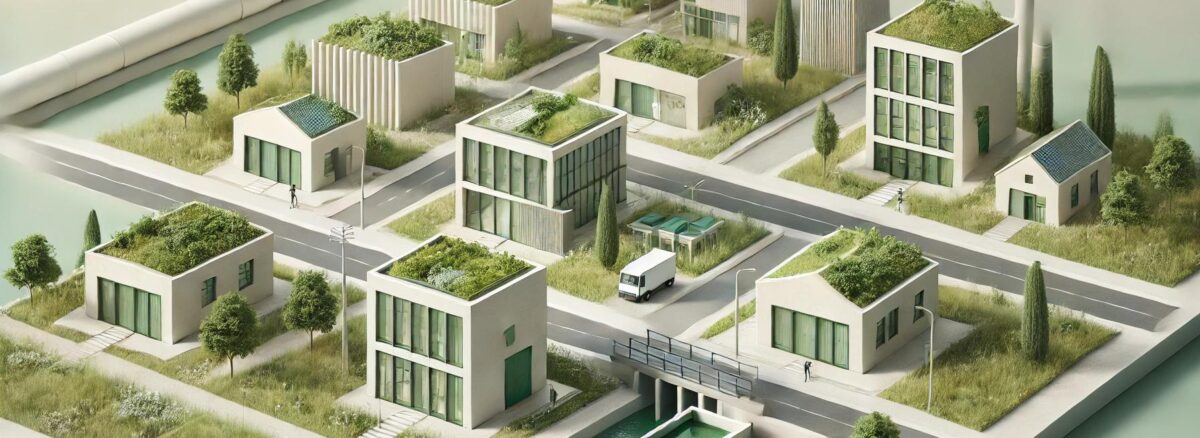- 21 August, 2024
- Francisco Gallego
- Comment: 0
- News

CIVIL ENGINEERING AND SUSTAINABILITY

Civil engineering plays a crucial role in shaping our built environment, and with it, the way we interact with the environment. In a world where sustainability has become a global priority, it is essential that civil engineering projects integrate practices that minimise environmental impact, promote resilience and optimise resource use from design to decommissioning.
Sustainable Design and Resource Management
Sustainable design in civil engineering involves careful selection of materials and techniques that not only ensure the functionality and durability of infrastructure, but also reduce its environmental footprint. The use of environmentally friendly concretes, incorporating additions such as fly ash and blast furnace slag, is an example of how innovation in materials can contribute to reducing CO2 emissions associated with construction, without compromising structural strength.
It is important to use resource management practices that optimise water and energy use. This may involve the implementation of rainwater harvesting systems, the use of renewable energy sources and the integration of energy efficiency technologies. In addition, the use of recycled and local materials is promoted to reduce the environmental impact related to transport and extraction of raw materials. This approach also promotes the circular economy by integrating the life cycle of materials into the design and construction process, resulting in more sustainable and efficient infrastructures.
Well-developed strategies for the long-term maintenance of infrastructure ensure that it remains in good condition and can be repaired in a sustainable way. In addition, planning the dismantling of structures so that materials can be recycled or reused will minimise the waste generated.
Life Cycle Assessment (LCA) as an Essential Tool
Life Cycle Assessment (LCA) is an indispensable tool for any sustainability-oriented civil engineering project. It allows engineers to analyse and quantify the environmental impacts at each stage of an infrastructure’s life cycle, from the extraction of raw materials to its demolition. This detailed assessment allows the identification and mitigation of critical points where the greatest environmental impacts are generated, providing a sound basis for informed decision making.
By applying LCA, it is possible to compare different design alternatives and materials, selecting those that offer the best balance between sustainability, cost and technical performance. This approach not only improves the environmental efficiency of projects, but also contributes to the long-term resilience of infrastructure, adapting to increasingly stringent environmental regulations and societal expectations.
Green Infrastructure and Nature-Based Solutions
Green infrastructure and Nature Based Solutions (NBS) are essential components of sustainable civil engineering where the focus is on design and planning using natural elements and ecosystems to provide environmental, economic and social benefits helping to achieve common benefits such as climate resilience, cost-effectiveness trade-offs and sustainable development where human needs are balanced with environmental conservation.
Sustainable Urban Drainage Systems (SUDS), green roofs and living walls are examples of how infrastructure can be designed to mitigate environmental impacts, improve resource management and increase the resilience of cities to climate change. SUDS, for example, allow for efficient stormwater management, reducing the overloading of sewer systems and minimising the risk of flooding. In addition, these solutions integrate natural processes into the urban environment, improving air quality, promoting biodiversity and creating green spaces that bring additional benefits to local communities.
Technological Innovation for Sustainability
Technological innovation is key to moving towards more sustainable civil engineering. Tools such as Building Information Modelling (BIM) enable engineers to simulate infrastructure performance from the earliest stages of design, optimising the use of resources and minimising waste. BIM also facilitates the coordination of multiple disciplines, ensuring that all aspects of sustainability are considered in the design and construction process.
In addition, the adoption of technologies such as drones, IoT sensors and artificial intelligence enables continuous monitoring of infrastructure, facilitating predictive maintenance and prolonging the lifetime of structures. These technologies not only improve the safety and efficiency of infrastructure, but also reduce the costs and environmental impacts associated with maintenance and repairs.
Conclusion
Sustainability in civil engineering is not just an option, but an imperative necessity to ensure a future where infrastructure is both functional and environmentally friendly. Integrating sustainable practices into the design, construction and maintenance of infrastructure ensures that it not only meets today’s needs, but also preserves natural resources and protects the well-being of future generations.
Through a holistic approach that combines the selection of sustainable materials, life cycle assessment, the implementation of green infrastructure and the use of advanced technologies, civil engineering can lead the way towards truly sustainable development. This approach not only strengthens the resilience of infrastructure, but also contributes to long-term social, economic and environmental well-being, ensuring that the built environment is a partner in protecting the planet.
Made by Edgar Chacón (Facilities & 3D Design Engineer)

